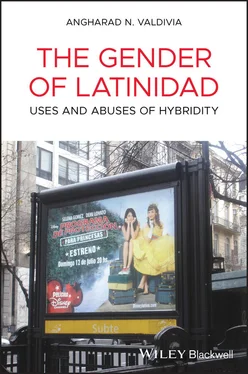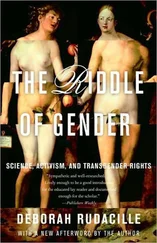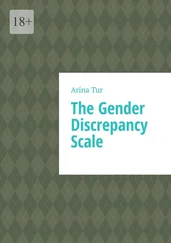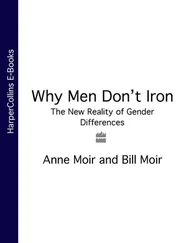The complexity of Latinidad derives from and informs the global circulation of mainstream media. Narratives and situations must be produced with acknowledgment of global flows and diversity. This is not an altruistic enterprise. Rather, from an industrial perspective, a global sensitivity potentially increases audiences, and therefore profits. If done well, frontloading the global possibilities can pay abundant dividends, not only for a particular media vehicle, but also for many more products in a franchise, for a particular company, genre, or actor (Meehan 2005). Indeed, given the synergy deployed by the major media conglomerates, initial global attention is the crack in the door through which massive investments will hopefully yield consistent, long‐term returns. Economic figures support this global move. Traditionally, in the network era, US mainstream producers of television shows recouped a large portion of their production costs with the large US audience. Global circulation of these media vehicles, leading to multiple syndications, was merely the icing on the cake of a very profitable national distribution model. In the contemporary post‐network era, when conglomerates release their films simultaneously across a range of countries, or parse out releases to coincide with national holidays, the global is no longer the afterthought but the very core of a distribution strategy. In fact, film production has experienced a flip of its 80/20 budget model – that is, whereas through the 1980s, Hollywood film planned to recoup 80% of its investment with domestic audiences, nowadays the aim is for 80% to come from global audiences. Another facet of media industry expansion alongside Latina/o exclusions is that mergers of Latina/o‐targeting media do not include Latina/os in the process. No apparent upward mobility from entry‐level to executive ranks in the merged top brass exists for Latina/os working in Latina/o‐targeted media industries. Workers from the Latina/o or Spanish‐language side do not move to the merged English company. Negrón‐Muntaner and Abbas (2016) found that Latina/o media underemployment is actually accelerated by media market consolidation.
The large sums that it takes to greenlight a Hollywood blockbuster, such as the now ubiquitous superhero movie, apparently have caused Latina/os nearly to disappear from our screens when such movies are shown. This generates an internal contradiction, in that big‐budget movies apparently prefer a racialized binary, but these movies are supposed to appeal to a global population whose composition is much more complex than black and white. Indeed, the global majority is “brown,” even as Hollywood film remains either uninformed or resistant to this fact (Silva 2016). Music, digital gaming, advertising campaigns, and pornography all include Latina/o production and representation, but the continuities are far greater than the ruptures. Today's US Latina/os continue to appear in the mainstream mostly according to stereotype, and more often in sidekick or background roles than as protagonists. However, we cannot pretend that nothing has changed. Indeed, numerical analyses show both gains and losses that run counter to linear hopes of incremental improvement (e.g. Negrón‐Muntaner et al. 2014; Negrón‐Muntaner and Abbas 2016).
Some of the most promising theoretical and conceptual developments for an exploration of Latinidad in mainstream media are the inclusion of hybridity (Lowe 1991; Kraidy 2006), multiracial studies (e.g. Nishime 2014), and mixed‐race studies (Washington 2017b). Challenging our field to consider hybridity in conjunction with international communications, Kraidy draws on the many intellectual streams that converge in cultural production. I am informed by the mapping of the field of hybridity by Kraniauskas (2000a, b), who identifies a cultural/anthropological strain (Canclini 1995) and a more psychoanalytical literary version (Bhaba 1994), both of which circulate as globally influential versions of hybridity. Mapped over Media Studies, from where I write, this bimodality of contemporary theories of hybridity reminds me of a constructed binary within my field that had largely, but not totally, been abandoned by the late 2010s. The US academy's tendency toward binaries, as well as its rejection of paradigms that criticize structural inequalities, resulted in the 1980s in a juxtaposition between cultural studies and political economy. This fiction was difficult to sustain, as global intellectual traditions inextricably connected these two areas of study (e.g. Cardoso and Faletto 1979; Lowe 1996), and had done so for many decades (O'Connor 1991). I find that the bimodal approaches to hybridity – in literature and anthropology – inherit traces of this divide, which partly is informed by a US academy that despite statements to the contrary, has not fully embraced global intellectual perspectives (see Shome 2016). In terms of the interdiscipline Media and Cultural Studies, there is still relatively little research on Latina/os (Valdivia 2004b), and most of that which exists is medium‐specific rather than broad, sweeping across the terrain of mainstream popular culture. Additionally, much – though not all – of the research on media issues is currently carried out by scholars outside of Media Studies, and often reveals a lack of familiarity with sophisticated approaches to the study of media. This project thoroughly combines Latina/o and Media Studies, taking both interdisciplines as foundational to the study of contemporary popular culture. Moreover, it takes both the textual and the industrial seriously.
Hybridity is not a new term or concept. Though its original use in the 17th century was in a biological sense, much of the resistance to it stems precisely from its racist social applications. Hybrid agricultural plants, for example, are not only more resistant to disease but are also infertile. However, when applied to populations in the 18th century, hybridity was often “invoked by those hostile to racial difference” (Labanyi 2000, p. 56) – usually in conjunction with the term “miscegenation,” which connoted unwanted and often illegal reproduction between white women and men of color. This concern was all the more intense in a historical period marked by colonial expansion, which brought many previously separate populations in contact with one another (Young 1995). Miscegenation was legally precluded in some settings so as to preserve both purity and colonial authority, but in others it was encouraged so as to improve, Westernize, and whiten the local population in a positivist quest for racial breeding. Of course, the latter strategy always simultaneously generated fears of the tipping point where the native blood, stock, and bodies would outnumber the racial purity of the white colonizer. Fears of mixing were voiced both by the colonizers and the colonized. For instance, hybridity was reviled by Octavio Paz (1959), who identified the pachuco, a young masculine Mexican American resistant subject, as an instance of depravity. For Paz, this depravity resulted from the mixing of the purity of Mexico with the pollution of the United States. Fears of the contamination, dilution, and disappearance of the pure‐white subject continue today, and are central to understanding the contemporary sociopolitical situation wherein Latina/os have become the largest US minority, with some demographic projections showing us becoming the majority sometime in this century. From a Latin American perspective, Paz's sentiments toward US Latina/os have not altogether disappeared. Given that so many producers of mainstream US Latina/o media are actually Latin Americans, this historical trace is not inconsequential. As well, these fears demonstrate the endurance of a biologically and anthropologically untenable belief in purity – though, when people implicitly refer to “purity,” this has to be treated as a floating signifier.
Читать дальше












